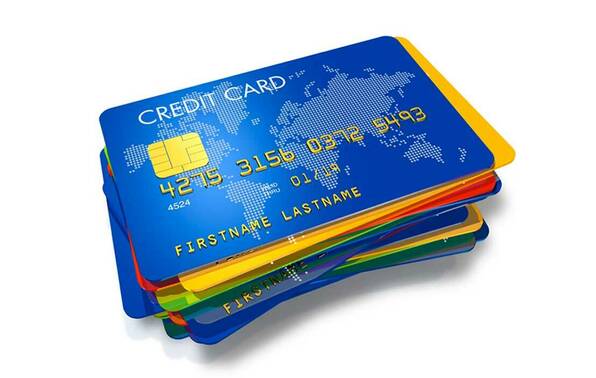International money transfers: what’s the cheapest way to send money overseas?

Using your bank to transfer money internationally could be costing you hundreds of dollars more than it costs with other services. Read our article to find out the best way to transfer money internationally.

To understand which service offers the best value for international money transfers, we looked at how much it would cost to send NZD $10,000 to Australia, India, The Philippines, Fiji and Samoa.
We looked at how much it would cost to send money internationally through New Zealand’s five biggest banks (ANZ, ASB, BNZ, Kiwibank, and Westpac), and four foreign exchange providers (Wise, XE, OFX, and Remitly).
What’s the best way to transfer money internationally?
Wise was the cheapest service in our test for sending money to Australia and the Philippines and was the second-best service for sending money to India.
XE was the best value service for sending money to India and Fiji and was competitive with Wise in the Philippines.
Are foreign exchange providers or banks better value for sending money overseas?
Foreign exchange providers offer much better value than the banks
Using your bank to make international transfers might be convenient, but they don’t offer good value compared to non-bank foreign exchange providers.
In our test, the average foreign exchange provider offered significantly better value than the average bank for transfers to Australia, India, the Philippines and Samoa.
How much could you save?
Using foreign exchange providers could save you some serious money.
When sending NZD$10,000 to Australia, using Wise instead of Westpac could get you an additional NZD$200 worth of Australian Dollars.
When sending NZD$10,000 to India, using XE instead of Westpac could get you an additional NZD$259 worth of Indian Rupees.
When sending NZD$10,000 to the Philippines, using Wise instead of Westpac could get you an additional NZD$234 worth of Philippine Pesos.
Sending money to the Pacific Islands
Banking infrastructure in the Pacific Islands is limited, which creates issues for foreign exchange.
The result is that there are fewer ways to send money to the Pacific, leading to less competition and worse value. Wise do not currently support transfers to Fiji or Samoa, and OFX do not currently support transfers to Samoa.
With the average bank, sending NZD$10,000 resulted in:
NZD$9,819 of value arriving in an Australian recipient’s account
NZD$9,734 of value arriving in a Fijian recipient’s account
NZD$9,486 of value arriving in a Samoan recipient’s account arriving in Samoa.
In our test, ASB was the best way to send money to Fiji, with XE the best service for sending money to Samoa.
How do international money transfer fees work?
Different services have different pricing structures when it comes to sending money internationally.
Bank charges to transfer money internationally
If you are sending money through your bank, there are three things you need to think about when pricing up an international transfer:
Exchange rate: this is the cost of the currency you are looking to purchase relative to the currency you have.
International transfer fee: a service charge for sending money internationally. These range from $0 to $5 when using online banking but can be up to $30 if you do it in branch.
Recipient fees: when your money arrives at its destination, the recipient’s bank may pass a cost onto the recipient. These fees can be shared, which sees the sender pay a SHA fee, the beneficiary can pay the fees, known as BEN fees, or the sender can cover the cost, known as an OUR fee.
It's important to consider all of these costs when making a transfer. A bank might say they have no fees for making an international transfer, but offer poor value on the exchange rate. Similarly, a bank could advertise the best exchange rate, but have high fees for making a transaction.
In our test, we have included any foreign transaction fees, and the OUR fee, in making our transactions.
Charges with other international money transfer providers
Things are a bit simpler with the non-bank providers we looked at.
Wise: shows the exchange rate on offer in addition to a substantial fee
XE: shows the exchange rate on offer but has no fee
OFX: shows the exchange rate on offer but has no fee
Remitly: shows the exchange rate on offer in addition to a small fee.
While non-bank providers have simpler price structures, it’s still important to consider the total cost.
Wise has some of the highest fees in our study, but because they offer such competitive exchange rates, they are among the cheapest providers.
Similarly, while OFX and BNZ have no fees, the poor exchange rates on offer mean you get much worse value than using Wise.
In our test, we have included any fees imposed by transfer providers when making payments.
How long do international money transfers take?
Don’t leave an international transfer to the last minute.
International money transfers take longer than making a transfer domestically.
How quickly the recipient’s bank can process the payment, security checks, and things like public holidays and banking hours can all delay the money arriving in the recipient’s account.
We’d recommend allowing at least three business days for an international transfer to arrive in the recipient’s account.
What's the best way to send money to Australia?
Wise offers the best value if you’re sending money to Australia.
In our test, when we sent $10,000 to Australia with Wise, it resulted in AUD$9,100 (NZD$9,981) arriving on the other side.
OFX were a close second, with the recipient receiving AUD$9,064 (NZD$9,941).
These foreign exchange providers offer significantly better value than the banks.
On average, sending $10,000 with a bank results in AUD$8,952 (NZD$9,819) for the recipient. BNZ offered the best value, while Westpac offered the worst.
If you are a Westpac customer sending NZD$10,000 to Australia, using Wise rather than your bank will buy you an additional AUD$184 – a difference just over NZD$200.
What's the best way to send money to India?
XE offers the best value if you’re sending money to India.
In our test, when we sent $10,000 to India with XE, it resulted in ₹516,001 (NZD$9,959) arriving on the other side.
Wise were a close second, with the recipient receiving ₹515,018 (NZD$9,940).
On average, sending $10,000 with a bank results in ₹504,813 (NZD$9,743) for the recipient. BNZ offered the best value, while Westpac offered the worst.
Kiwibank did not display an exchange rate for Indian Rupees during our test, and have been unable to provide a historical exchange rate covering our test period.
If you are a Westpac customer sending NZD$10,000 to India, using XE rather than your bank will buy you an additional ₹13,443 – a difference of just under NZD$260.
What's the best way to send money to the Philippines?
Wise offers the best value if you’re sending money to the Philippines.
In our test, when we sent $10,000 to the Philippines with Wise, it resulted in ₱335,984 (NZD$9,945) arriving on the other side.
XE were an extremely close second. With XE, our recipient got ₱335,887 (NZD$9,942).
These foreign exchange providers offer significantly better value than the banks.
On average, sending $10,000 with a bank results in ₱329,780 (NZD$9,762) for the recipient. BNZ offered the best value, while Westpac offered the worst.
If you are a Westpac customer sending NZD$10,000 to the Philippines, using Wise rather than your bank will buy you an additional ₱7,911 – a difference of NZD$234.
What's the best way to send money to Fiji?
ASB offers the best value if you’re sending money to Fiji.
In our test, when we sent $10,000 to Fiji with ASB, it resulted in FJ$13,127 (NZD$9,817) arriving on the other side.
XE were in second, with the recipient account receiving FJ$13,110 (NZD$9,804), with ANZ close behind in third.
When we look at Fiji, the banks are much more competitive with the foreign exchange providers.
On average, sending $10,000 with a bank results in FJ$13,016 (NZD$9,734) for the recipient, compared to FJ$12,946 (NZD$9,681) with our foreign exchange providers.
What's the best way to send money to Samoa?
XE offers the best value if you’re sending money to Samoa by a significant margin.
In our test, when we sent $10,000 to Samoa with XE, it resulted in WS$16,000 (NZD$9,893) arriving on the other side.
When it comes to sending money to Samoa, there’s no real competition. OFX and Wise do not provide transfers to Samoa. Sending NZD$10,000 with Remitly will see the recipient receive WS$15,016 (NZD$9,285).
On average, sending NZD$10,000 with the banks will yield WS$15,341 (NZD$9,486).
Exchange rates were gathered between 7am and 10am on the 19th of August.

Credit card rates and fees
Find the right credit card and work out whether expensive rewards schemes are worth their cost.
Member comments
Get access to comment